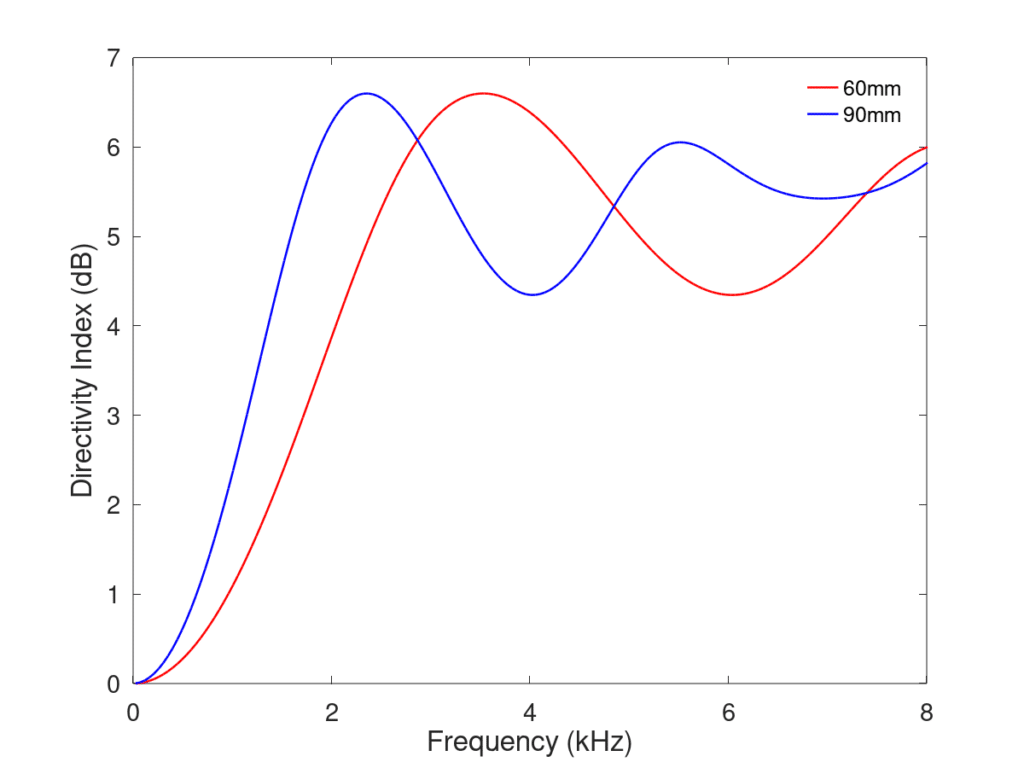The design of a microphone array plays an important role in the spatial selectivity of an acoustic beamformer. For acoustic beamforming for speech applications, the target frequency range is typically from 200 to 8000Hz. Small interelement spacing is required to avoid spatial aliasing. However, at lower frequencies, small arrays create wide beams. As discussed in Microphone Array Design, uniform circular arrays (UCA) are a popular choice for the geometry design because of their rotational invariance. This is important when the desired beam direction is unknown. How can the circular arrays be design, such that the competing low frequency and high frequency spacing requirements? Concentric Circle Arrays, an array with multiple circular arrays with different radii, in combination with frequency domain beamforming.
Figures 1 & 2, show the directivity index and the white noise gain of UCAs with a radii of 60mm and 90mm. Figure 1 shows that the 90mm array has better directivity between 0 to 2800 Hz and 4800 to 7800Hz, while from 2800 to 4800Hz outperforms the 90mm array.

Given this knowledge of behavior, we can design a frequency domain beamformer of the form:
Here the weights are scaled such that more emphasis is given to elements that provide the greatest directivity for each frequency bin.
VOCAL Technologies offers custom designed solutions for beamforming with a robust voice activity detector, acoustic echo cancellation and noise suppression. Our custom implementations of such systems are meant to deliver optimum performance for your specific beamforming task.